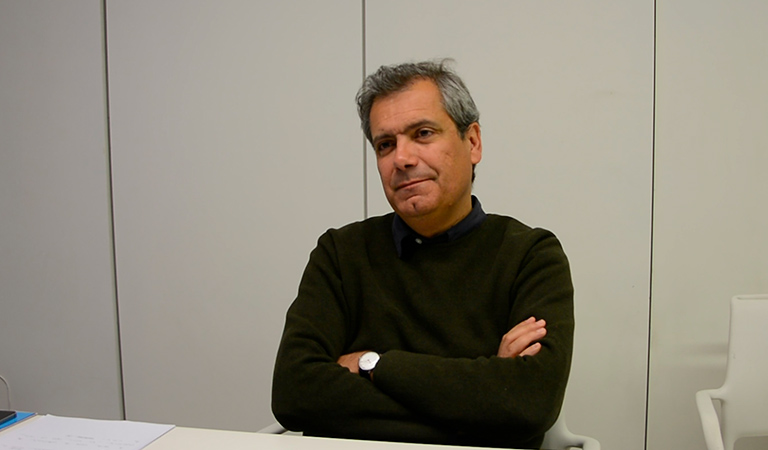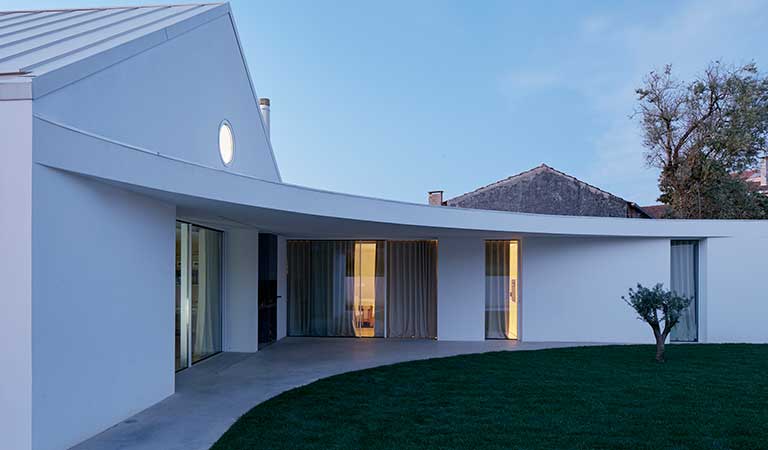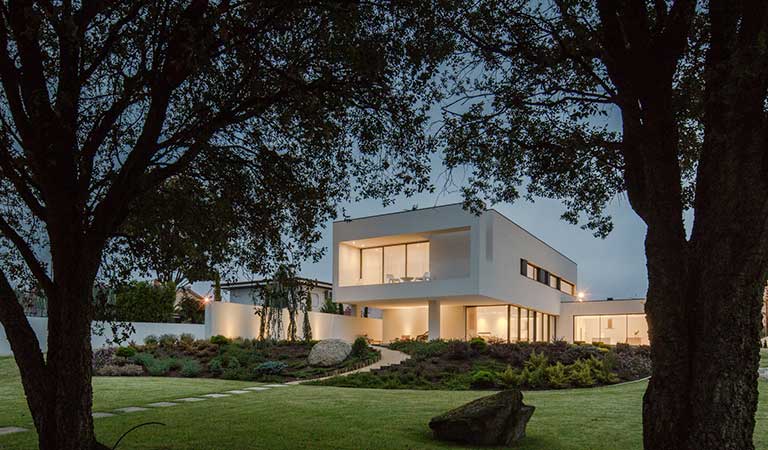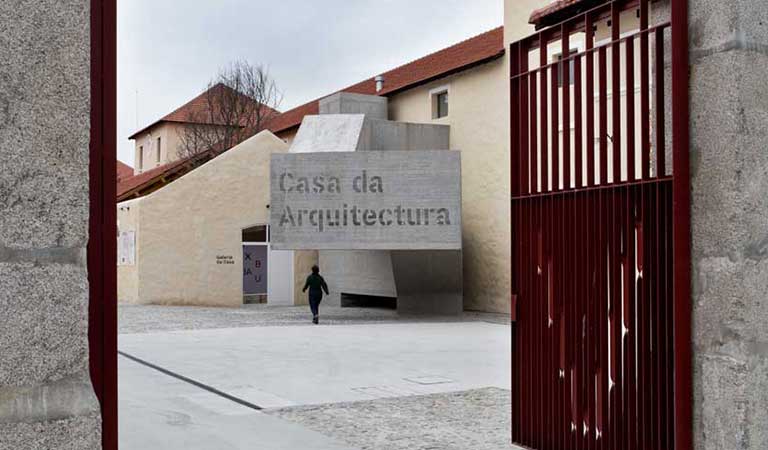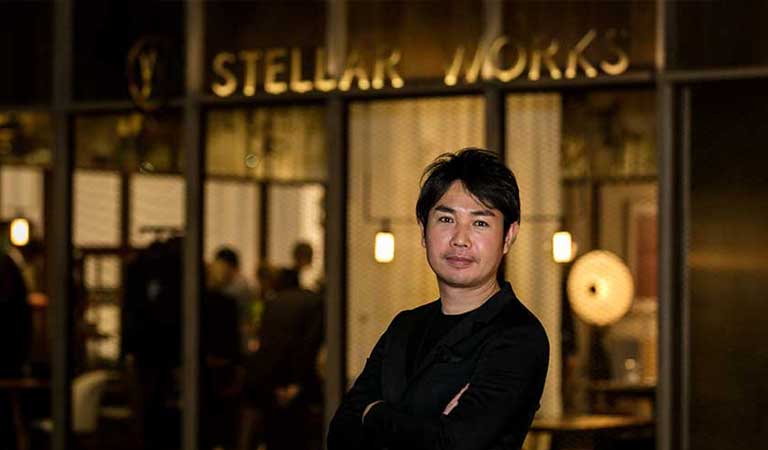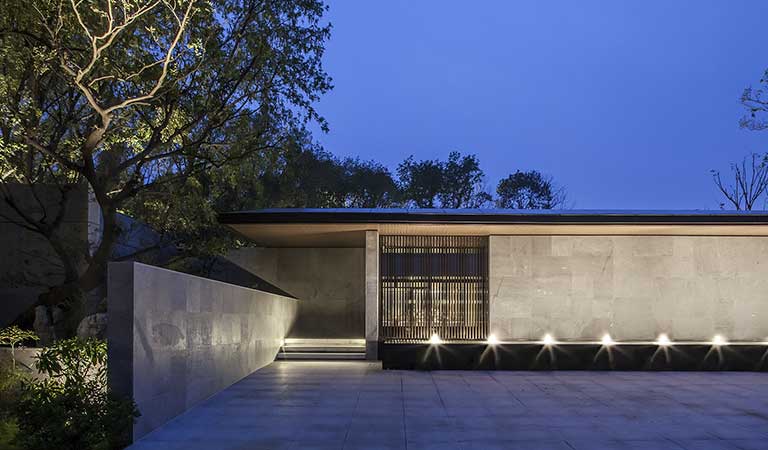In our most recent interview, we visited the Lisbon office Frederico Valsassina Arquitectos.
With a practice settled on the "ecstasy of the straight line" and always based on a sobriety and simplicity of the forms that distinguish it, the works made by Frederico Valsassina are essential to the understanding and characterization of the portuguese contemporary architecture, made in the last few decades.
Na nossa mais recente entrevista, visitámos o gabinete lisboeta Frederico Valsassina Arquitectos.
Com uma prática assente no “êxtase da linha recta” e pautando sempre por uma sobriedade e simplicidade das formas que a distingue, a obra construída de Frederico Valsassina é hoje essencial à compreensão e caracterização da arquitetura contemporânea feita em Portugal nas últimas décadas.
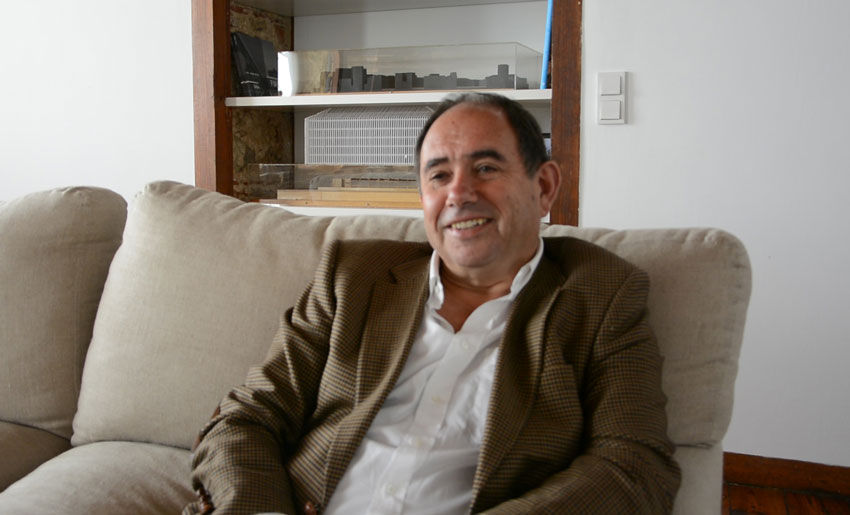
Frederico Valsassina
— Approach —
When I start the approach on a project I think location is the key, the insertion on the place.
Then we have this thing of ...This ecstasy for the straight line, we never neglect this very formal sense of the project itself.
But as I said, knowing the place, realizing how it was born, how it lived, how it integrates with the people who inhabit it, this to me are very important symptoms.
Then there’s the program, the program given by the client, and then this symbiosis between the place, the program, and the functional and technical part of the building, end up generating a project. I think this is very fast here, it’s done very easily. Why? Because this team works with me for many years now, we have a wide identification of criteria, and as I usually say: "We know where we are going, with whom we are going and how we are going". So I think these three things are fundamental.
Eu quando começo a abordar um projeto acho que o local é fundamental, a inserção no local.
Depois nós temos esta coisa do…Este êxtase da linha reta, nunca descuramos este sentido muito formal do próprio projeto.
Mas como eu disse, o conhecer o local, o perceber como é que ele nasceu, como é que ele viveu, como é que ele se integra com as pessoas que o habitam, isto para mim são sintomas muito importantes.
Depois há o programa, o programa dado pelo cliente, e depois nesta simbiose entre o local, o programa, e a parte funcional e técnica do edifício, acabam por gerar um projeto. Eu acho que isto hoje aqui já é muito rápido, já se faz isto com muito à vontade. Porquê? Porque são pessoas que trabalham à muitos anos comigo, temos uma identificação muito grande de critérios, e eu normalmente digo sempre: “sabemos para onde vamos, com quem vamos e como vamos”. Portanto, eu acho que estas três coisas são fundamentais.
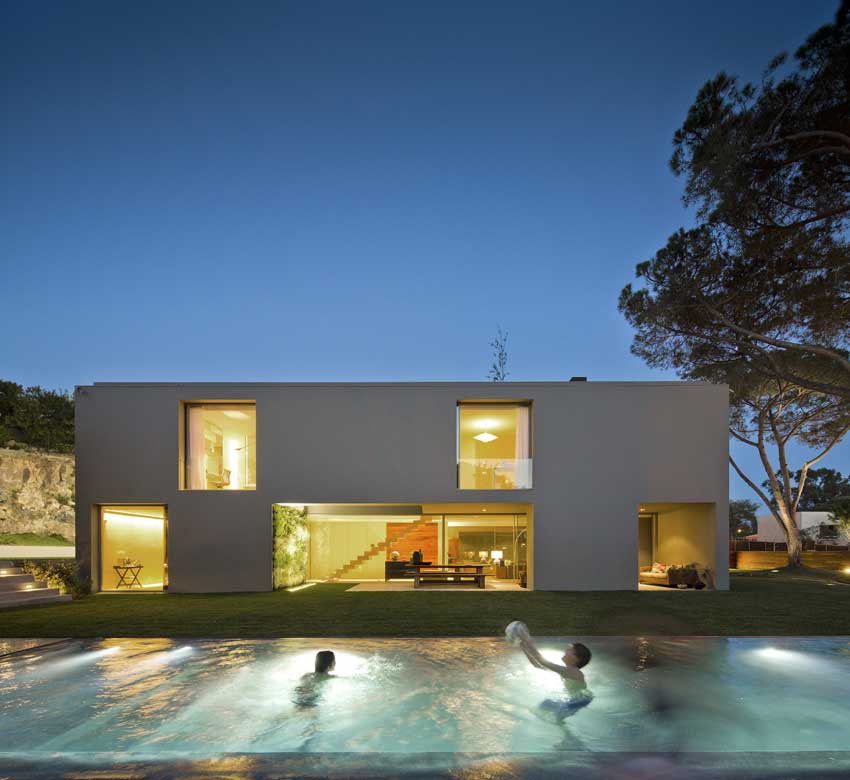
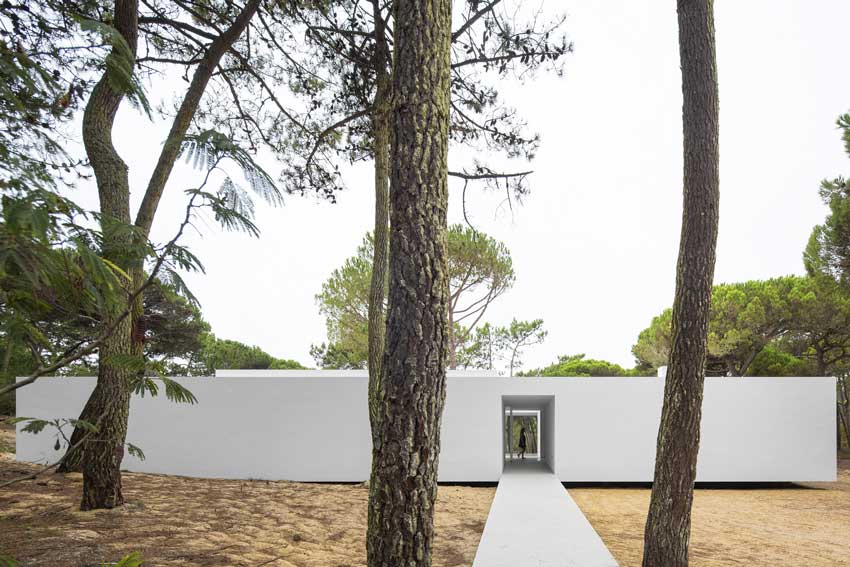
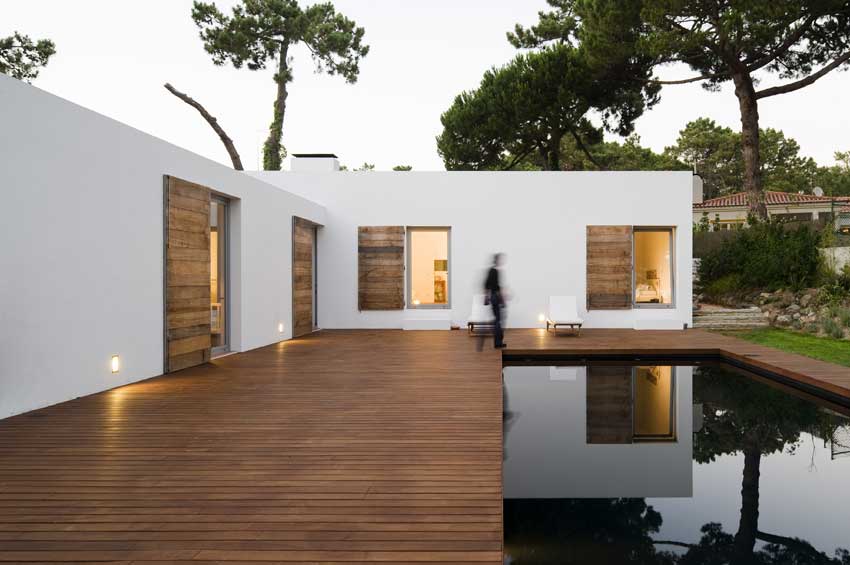
— Material —
What’s your favorite material?
Concrete! I've done several experiments with concrete, and through concrete I've had a brutal perception of the materials and their way of living with us.
And I think it’s a material that has a fantastic temperature, is heavy, it’s not shiny, is very much in its natural state and is perhaps the first artificial stone that man creates. It’s a material that I find inexhaustible.
Because I use few materials in my architecture, for example stones I never use polished, I like to use them in a state very close to natural, or only sawn. When I use a stone sawn, never polished, maybe burnished sometimes. But concrete with that it’s fantastic, as I said it’s this artificial stone that’s easy to shape but hard to destroy. And it creates a very interesting thing that is, a brutal project preparation. For example, I’m currently making a concrete house, all inside and out, the interior and exterior walls. Where the relationship between the structural design and the architecture project was brutal, for example the electrical devices had to be left from the start, the doors hoops, everything had to be reconciled.
Qual é o seu material de eleição?
O betão! Eu tenho feito imensas experiências com betão, e através do betão tenho tido uma perceção brutal dos materiais e da sua maneira de conviver connosco.
E eu acho que é um material que tem uma temperatura fantástica, é pesado, não é brilhante, está muito no seu estado natural e é talvez a primeira pedra artificial que o homem cria. É um material que eu acho inesgotável.
Porque eu uso poucos materiais na minha arquitetura, por exemplo pedras eu nunca uso polidas, gosto de as usar num estado muito perto do natural, ou só serradas. Quando utilizo uma pedra uso serrada, polida nunca, talvez brunida às vezes. Mas o betão nisso é fantástico, como disse é esta pedra artificial que é fácil de moldar mas é difícil de destruir. E cria uma coisa muito interessante que é, uma preparação de projeto brutal. Por exemplo, eu agora estou a fazer uma casa em betão, toda por dentro e por fora, as paredes interiores e exteriores. Aonde a relação entre o projeto de estruturas e o projeto de arquitetura era brutal, por exemplo os dispositivos elétricos tiveram que ser deixados à partida, os aros das portas, tudo teve que ser conciliado.
— Influences —
The major influences in your work?
I think that from the architects of the past, Mies van der Rohe is an influence. Every time I go to a place and there’s Mies works, the more I like to see them and the more I identify with them.
In Portugal there’s three or four architects who are references to all others, the case of Siza (Vieira), Eduardo (Souto Moura), lately Manuel Aires Mateus, João Luís Carrilho da Graça. I think they are brutal influences for all the architects, some we have even worked together! And then I think that everything is a good influence if we start to see some architecture from the last century, there are incredibly well designed pieces.
So I mean, my influences go a lot in that direction, but then by an attempt of simplicity of forms and materials. I'm terrified of putting too many materials and when I walk in a city I don’t go looking for this or that, I go to meet the unknown and there are things that call my attention. And so these end up being references, that I keep, and then sometimes they appear or they don’t, but I don’t make them appear... It’s an accumulation of experiences.
Quais são as maiores influências no seu trabalho?
Eu acho que assim dos arquitetos do passado, o Mies van der Rohe é uma influência. Cada vez que vou a um sítio e que há obras do Mies, mais gosto de as ver e mais me identifico com elas.
Em Portugal há três ou quatro arquitetos que são referências para todos os outros, o caso do Siza (Vieira), do Eduardo (Souto Moura), ultimamente do Manuel Aires Mateus, do João Luís Carrilho da Graça. Acho que são influências brutais para todos os arquitetos, alguns até temos trabalhado em conjunto! E depois eu acho que tudo são boas influências se começarmos a ver alguma arquitetura do século passado, tem peças inacreditavelmente bem desenhadas.
Portanto quer dizer, as minhas influências vão muito por aí, mas depois por uma tentativa de simplicidade de formas e de materiais. Tenho horror a pôr muitos materiais e quando passeio numa cidade não vou muitas vezes à procura disto ou daquilo, vou ao encontro do desconhecido e há coisas que me chamam à atenção. E portanto essas acabam por ser referências, que as guardo, e depois às vezes aparecem ou não aparecem mas não faço por aparecerem…É um acumular de experiências.
— Architecture in Portugal —
When I graduated there was a brutal crisis after the 25th April (portuguese revolution), and then I saw the uprising, the rebirth of the country, democracy, and foreign investment. Then I saw a crash afterwards, and now I saw the reborn again with foreign investments in the recovery of the city.
I think that's the way it is, I think we the offices have to adapt to the moment we live in. But a very interesting thing is that Portuguese architecture is in good health, and it’s not because of more crisis or fewer crises. I think it happens like this, at times of crisis the large offices become medium, the medium become small and the small ones almost disappear. This has happened many times already, and will happen again.
Quando me formei havia uma crise brutal a seguir ao 25 de Abril, depois vi o despoletar, o renascer do país, da democracia, e dos investimentos estrangeiros. Depois vi no seguimento uma queda, depois vi agora o renascer outra vez com os investimentos estrangeiros na recuperação da cidade.
Eu acho que é assim, eu acho que nós ateliers temos que nos adaptar ao momento em que vivemos. Mas uma coisa muito interessante é que a arquitetura portuguesa está de boa saúde, e não é por causa de mais crise ou de menos crises. Eu acho é que acontece assim, nas alturas de crise os ateliers grandes tornam-se médios, os médios tornam-se pequenos e os pequenos quase que desaparecem. Isso aconteceu já várias vezes, e vai tornar a acontecer.
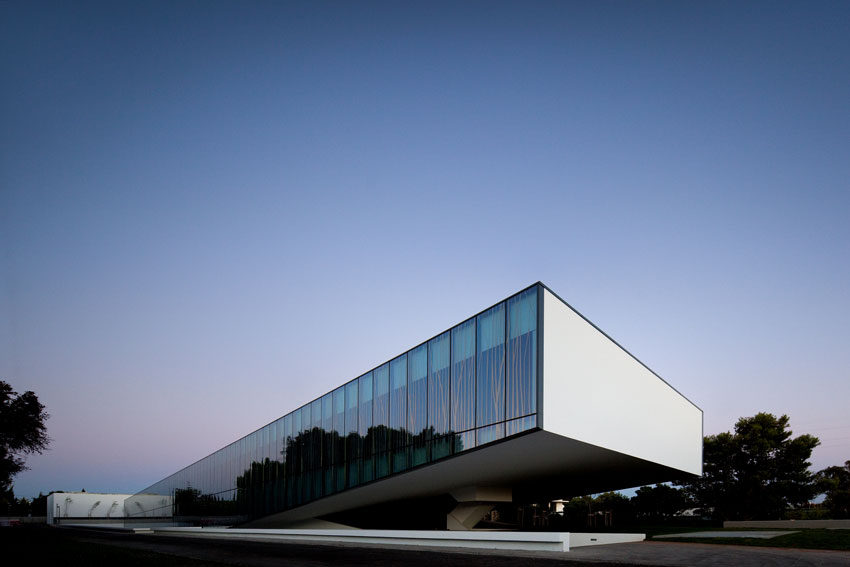
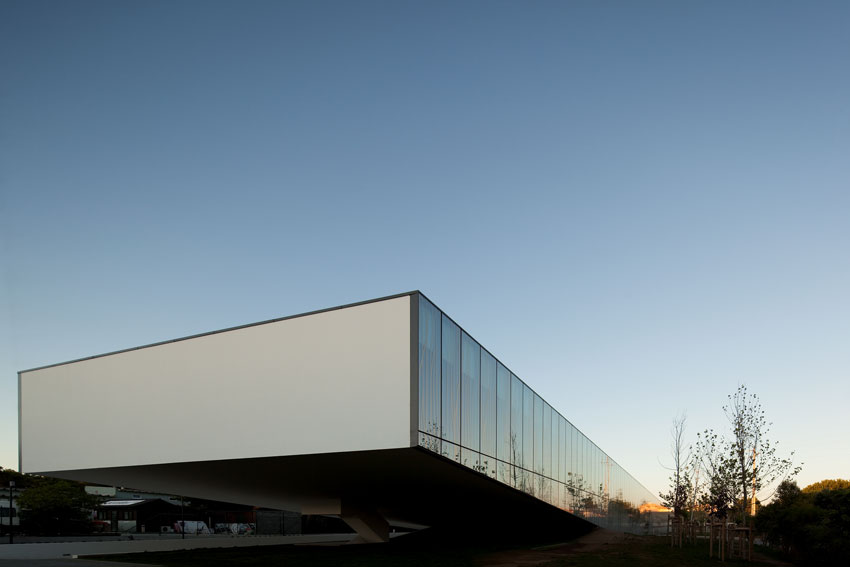
I think we have to have enough elasticity to realize how we are going and the state of things. I think the reality of national and international architecture, and in Portugal has been a constant, is that architecture turns out to be the guessing of crises and also ends up being the preview for the rebirth, of a zone, a greater area or of a more prosperous time. For instance now, the first activities to realize that the country is beginning to recover, is architecture itself with the all the work taking place.
When another crisis restarts, and we have lived in crises since the nineteenth century, financial aids there have been a few and I think they will continue to happen, and I think we have to adapt. It’s not because of this that there’s good or bad architecture... And it’s seen that many portuguese architects in this time of crisis turned abroad, and managed to do good works in several places, without any problems.
Eu acho que nós temos que ter a elasticidade suficiente para nos apercebermos de como é que vamos e do estado das coisas. Eu acho que a realidade da arquitetura nacional e internacional, e em Portugal tem sido uma constante, é que a arquitetura acaba por ser o adivinhar das crises e também acaba por ser o adivinhar do renascer, duma zona, duma área ou de uma altura mais próspera. Veja-se agora que as primeiras atividades a perceberem que o pais esta a começar a recuperar, é a própria arquitetura com as encomendas que há.
Quando recomeçar outra crise, e nós vivemos desde o século XIX em crises não é portanto, ajudas financeiras já foram algumas e eu acho que vão continuar a ser, e eu acho que nós temos que nos adaptar. Não é por causa disso que há boa ou má arquitetura… E veja-se que muitos arquitetos portugueses nesta altura de crise viraram-se para o estrangeiro, e conseguiram fazer bons trabalhos em vários sítios, sem problema algum.
— Clients —
How would you define the clients role in your work?
For example, I’ll give you cases, when approaching a house, when approaching a house I like my clients to participate with me. For them to live intensely the project and for more, so that they know us. Usually when they come to my studio, people know very well what architecture we do, so they come looking for a style of architecture that we do. And I also think that this has to be so, and therefore I like people to participate, and why? Because we also have to know them to realize the way they live.
Como define o papel dos clientes no seu trabalho?
Por exemplo, vou lhe dar casos, numa abordagem de uma casa, numa abordagem de uma casa eu gosto que os meus clientes participem comigo. Para eles viverem intensamente o projeto e mais para quê, para eles nos conhecerem. Normalmente quando vêm ter com o meu atelier, as pessoas sabem muito bem que arquitectura é que nós fazemos, portanto vêm à procura de se integrarem num estilo de arquitetura que nós fazemos. E eu também acho que isto acaba por ter que ser assim, e portanto eu gosto que as pessoas participem, e porquê? Porque nós também temos que os conhecer para perceber a sua maneira de viver.
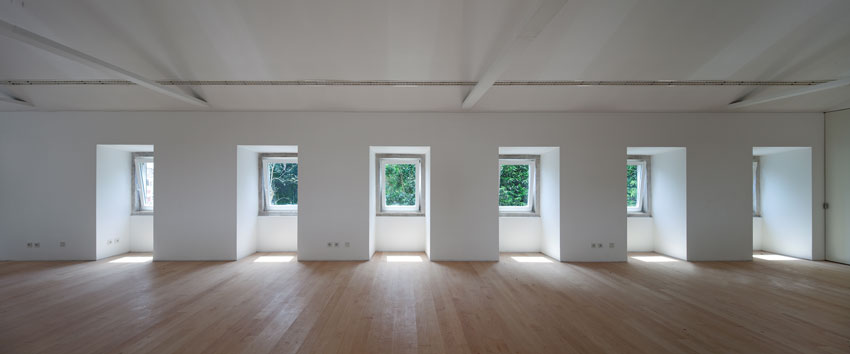
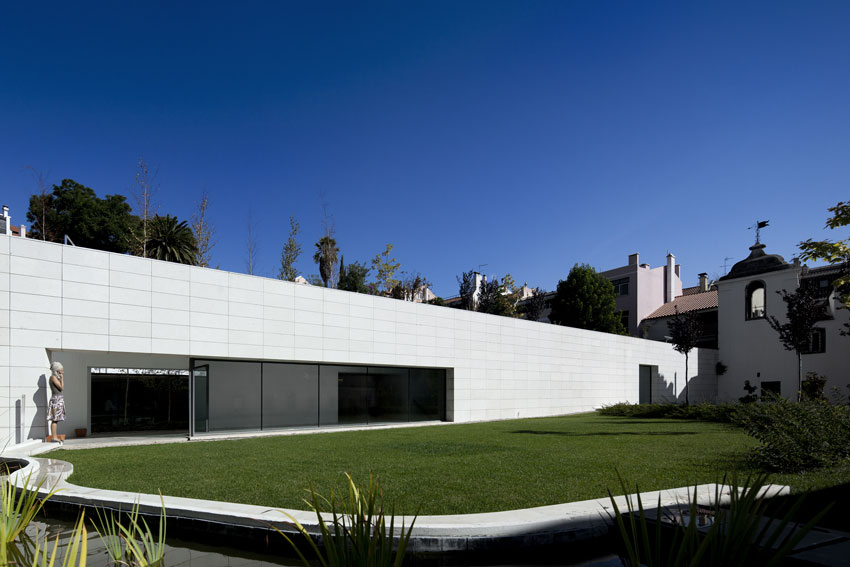
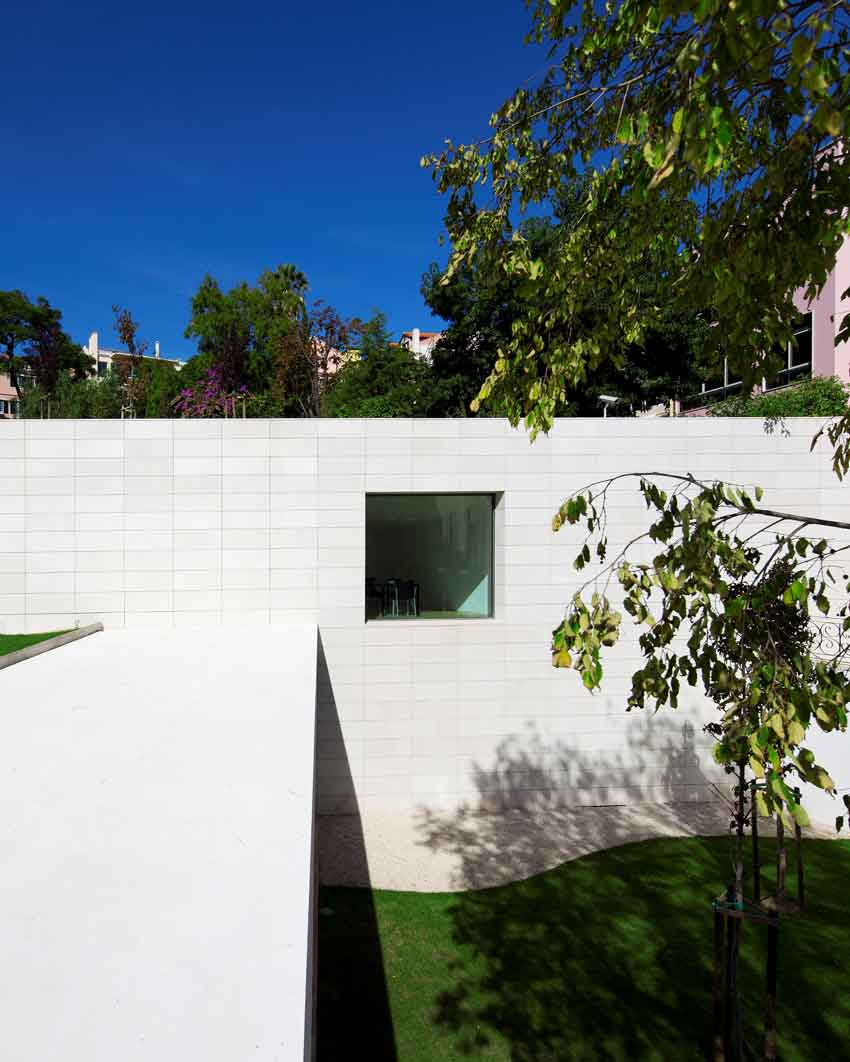
In more impersonal projects, which is the case now with the rehabilitation of residential buildings, there’s the commission and then there’s the presentation of the project. There’s not much of a relationship. Mostly because they come here looking for the knowledge of the architect or of the studio in the work we do, and they believe in the way we do it.
Then for example in this hospital we're doing, in this project of the CUF group by José de Mello healthcare, there’s an interaction because there are several skills. And it's very funny, and this was something I learned over time that is, I've changed the scale but there’s so much interaction with so many functions that a hospital has, that there are daily development meetings. And it's funny because it looks like a house relationship but on a completely different scale.
Then there’s another type that is, for example when it’s the headquarters of a company. In a company headquarters there’s always a working group that intervenes, and therefore accompanies, but does it in a rather impersonal way. Why? Because it’s not for him, he can be there now but tomorrow it will be for someone else. And then there's the state commission, that's the most impersonal of all, isn’t it?! Because it's a contest, it started from a project, it started from a very formal commission, and this is often the one I enjoy the less. Because I think it’s interesting the interaction between the developer and the architect himself.
Em projetos mais impessoais, que é o caso agora na reabilitação de edifícios de habitação, há a encomenda e depois há a apresentação do projeto. Não há muita relação, até porque aí vêm à procura muitas vezes do conhecimento do arquiteto ou deste atelier no trabalho que fazem, e acreditam na sua maneira de fazer.
Depois por exemplo neste hospital, neste projeto do grupo CUF da José de Mello saúde, aí há uma interacção porque há muitas valências. E é muito engraçado, e isso foi uma coisa que eu aprendi ao longo do tempo que é, mudei a escala mas há tanta interacção com tantas funções que um hospital tem por exemplo, que há reuniões diárias de desenvolvimento. E é engraçado porque parece uma relação de uma casa mas numa escala completamente diferente.
Depois há outro tipo que é, por exemplo quando é uma sede de uma empresa. Numa sede de uma empresa há sempre um grupo de trabalho que intervém, e portanto que acompanha, mas acompanha também de uma maneira um bocado impessoal. Porquê? Porque não é para ele, ele poderá la estar mas amanhã será para outro. E depois há a encomenda do estado, que essa é a mais impessoal de todas, não é?! Porque é um concurso, partiu de um projeto, partiu de uma encomenda muito formal, e muitas vezes essa é a que eu aprecio menos. Porque eu acho que é interessante o interagir entre o dono de obra e o próprio arquiteto.
